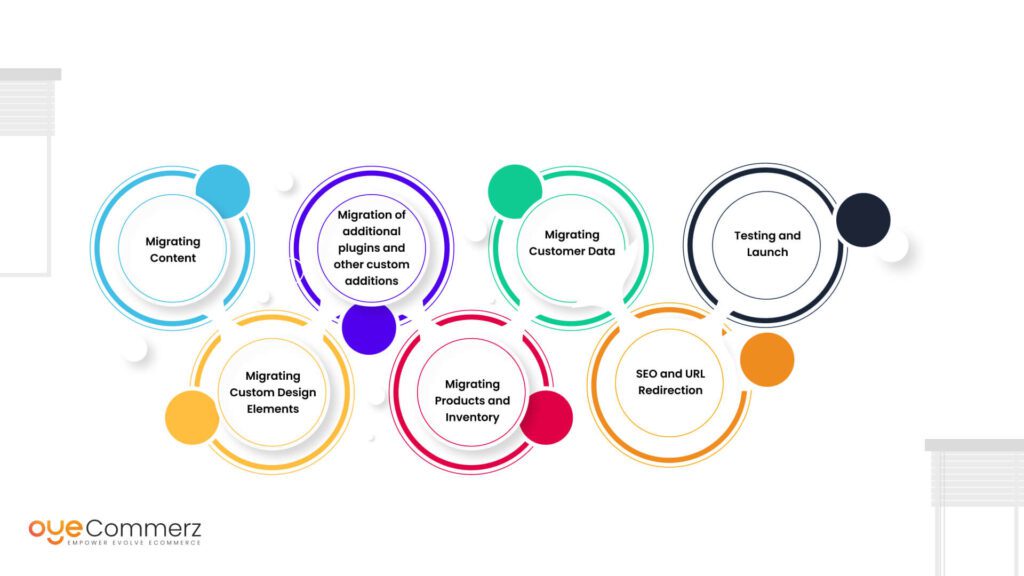Shifting from WP to Shopify marks an promising step in streamlining your e-commerce processes. As companies expand, choosing a solution that supports growth potential, UX, and customization becomes crucial. Shopify has emerged as a preferred choice for online merchants, providing superior adaptability, data protection, and ease of use. In this guide, we will delve into the transformative impact of this migration, discuss the advantages, and share practical tips to facilitate a seamless transition.
1. Top Reasons to Transition from WP to Shopify
The combination of WordPress and WooCommerce, continues to support countless e-commerce platforms. However, as companies expand, issues like plugin dependency, data risks, and technical complexities often obstruct progress. Shopify, designed explicitly for e-commerce, eliminates these issues with an all-in-one, user-friendly platform. Real data supports this transition—Shopify hosts over 4.4 million stores globally, with a documented 10% boost to sales performance for numerous merchants post-switch.
2. Key Benefits of Shopify for E-commerce Success
Shopify’s powerful platform is tailored for expanding brands. Its standout features include:
- Effortless Design Flexibility: Shopify provides over 80 expertly crafted themes.
- Integrated Tools: Features like Shopify Payments and integrated SEO save time and effort.
- Global Reach: Multi-currency support and regional customization empower brands to reach global markets.
Additionally, Shopify boasts an uptime rate of 99.98%, ensuring your store remains accessible.
3. Preparing for WP to Shopify Migration
Before migrating, assess your existing setup. Review inventory details, customer details, and search engine rankings. Resources such as Shopify’s Migration Kit or external tools can simplify this process. Develop a comprehensive plan, ensuring all resources—item details, images, and blog content—are optimized for transfer.
4. The Importance of Accurate Data Migration
Data migration is a cornerstone of a smooth platform switch. When moving from WordPress to Shopify, prioritize:
- Inventory Details: SKU, item summaries, and groupings.
- Client Information: Emails, purchase records, and custom fields.
- Search Engine Considerations: Retain meta tags, URLs, and forwarding paths to avoid SEO losses.
Use tools such as LitExtension to streamline data transfer while reducing mistakes.
5. Customizing Your Shopify Store
After the move, customizing your Shopify store ensures it reflects your business identity. Take advantage of Shopify’s intuitive page builder to design pages effortlessly. Shopify's templates are optimized for all devices, ensuring a smooth UX across devices—a critical factor, given 74% of e-commerce traffic comes from mobile users.
6. Maintaining SEO During Migration
SEO is vital for preserving your online presence during migration. Shopify is highly optimized for search engines with clean URL structures, built-in optimization tools, and seamless blog integration. Ensure:
- Implement 301 redirects for old URLs.
- Enhance updated content with targeted phrases.
- Use Shopify's apps Plug in SEO to monitor performance after the switch.
7. Post-Migration Testing
After finishing the transfer, conduct thorough testing.
Check:- Page load times (Shopify delivers faster speeds in contrast with WP).
- Payment integration reliability and transaction flow.
- Mobile responsiveness.
Quality assurance guarantees your store delivers a smooth shopping experience from day one.
8. Case Study of a Successful Migration
One such migration success story is Gymshark, a fitness apparel brand that transitioned to Shopify. After the switch, the company saw a 60% increase in mobile sales and significantly lowered site downtime. This showcases the capabilities of Shopify in driving e-commerce growth.
9. Overcoming Common Migration Issues
Migration is not without obstacles, such as information accuracy and adjusting tailored features. However, Shopify’s robust support and external professionals simplify the process. Collaborating with qualified Shopify developers ensures a smooth transition.
10. Starting Your Journey with Shopify
Switching from WordPress to Shopify represents a strategic approach to e-commerce. By focusing on growth, streamlining operations, and Data migration to Shopify enhancing the Migrating eCommerce platforms customer experience, Shopify empowers businesses to succeed in challenging industries.
Final Thoughts
Switching from WP to Shopify is a strategic move that can significantly boost your online business performance. With a robust migration plan, the appropriate resources, and expert support, you can unlock new success milestones.
Ready to make the leap? Let’s discuss how our Shopify migration services can transform your online store. Contact us now, or consider: Can your business afford to miss out on Shopify’s growth potential?

Comments on “Seamless WP to Shopify Migration: Your Definitive Guide to E-commerce Success”